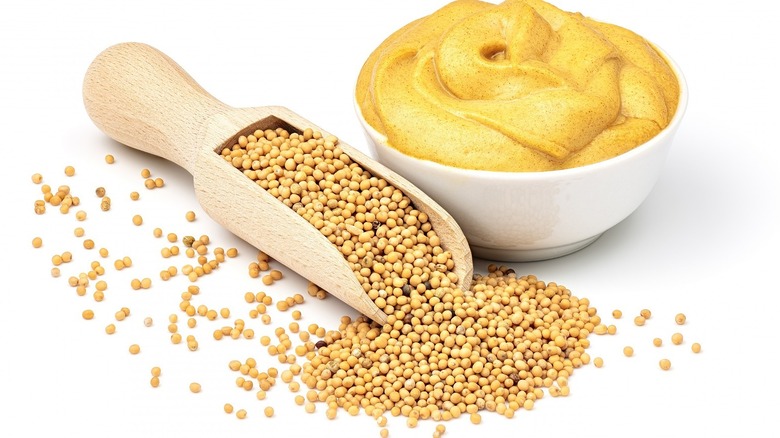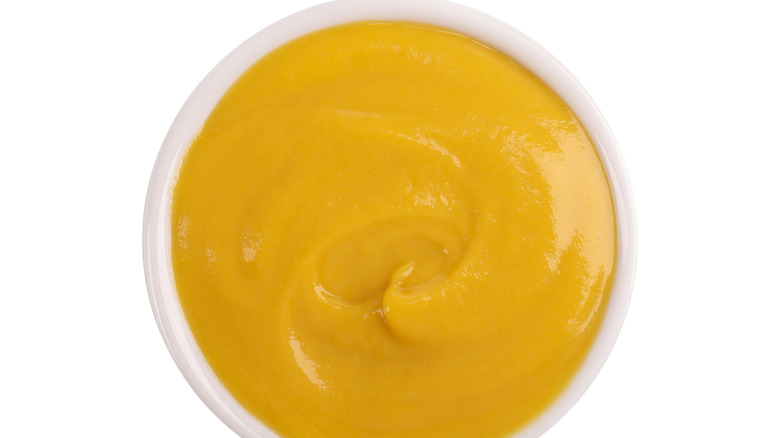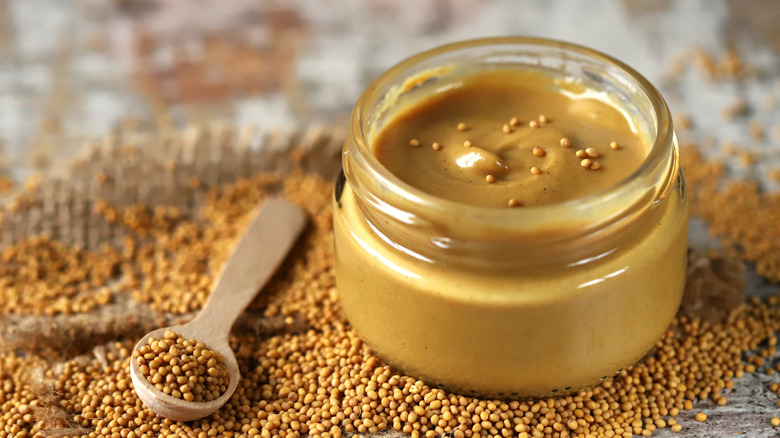Why A 2022 Mustard Shortage Could Be On The Way
It wouldn't be an exaggeration to say Western Canada had never seen flooding of the kind they experienced in November of 2021. The deluge, which delivered "a month's worth of rain in two days" (via NPR), caused heavy flooding and landslides, destroyed infrastructure, and slaughtered livestock. Initial estimates put the number of farm animals dead at over 600,000 poultry, 12,000 hogs, and 420 dairy cattle. 120 beehives were also destroyed. All told, the rains, which are now being described as the "most costly severe weather event in the province's history” by the Insurance Bureau of Canada, cost $450 million in damages to insured property alone (via CBC).
Western Canada wasn't the only area to feel the effects of climate change. Earlier this year, southern Canada, where most of the country's mustard seed is grown, saw hot weather have a negative impact on the region's mustard crops — so that if a plant normally has eight to ten seeds in a pod, the same mustard pods are only giving up four to six seeds this year (via AgCanada). Between the heat and the rain, it is easy to understand why the country's mustard seed crops are expected to fall by as much as 28% in 2021, according to one estimate (via France24).
Mustard producers say they are experiencing a crisis
The impact of a mustard seed shortage extends past Canada, and is being felt in countries that produce and consume it as a condiment. While most of the world's best dijon mustard is made in France's Burgundy region, most of the mustard seeds that go into that high-end condiment is Canadian. Already, commodities analysts like Ramzy Yelda are warning that next year's mustard prices on the whole aren't going to look too favorable for the consumer. Yelda says: "There was a disastrous drought in Western Canada [last summer]; Those who want the high-end mustard will have to pay more" (via France24).
To give it some perspective, Mundus Agri reports that in the 2020 to 2021 season, Canada managed to export 99,000 metric tonnes. This year, exports are expected to hit 78,000 metric tonnes, which the publication says is not only 20 percent lower than the mustard seed yields from the previous year, but also 41% lower than the initial estimate of 133,000 metric tonnes for this year's crops. It doesn't help that the heavy rains, as well as a drop in temperatures, haven't made it possible for the mustard plant to reach its full growth potential.
Christophe Planes, who works at Reine de Dijon, says: "We're in a crisis we haven't seen for 25 years. The price of seeds has gone up three or four times, and maybe five times soon."
Mustard will be more expensive in 2022
Burgundy's dijon mustard producers aren't just facing increased mustard seed costs. The region's white wine, which is another key ingredient for its premier mustard, has been subject to price hikes thanks to unseasonable weather that ate into harvests and cut wine yields. They're also facing the same supply chain challenges which have plagued other sectors of the food industry. Marc Desarmeinen, who works with independent mustard producer Fallot, says they're seeing price increases for packaging as a result: "The metal lids have risen by 42 percent, glass by 12 percent, cardboard 12 percent ..." (via France24).
With all that going on, and thanks to ongoing problems with shipping, mustard producers say they have no choice but to raise prices. Fallot says it expects premium dijon to cost between 7% and 16% more next year. Meanwhile, other brands like Reine de Dijon says a price hike is needed. "Otherwise the company cannot survive," Planes says.
All these factors make it a certainty that mustard prices will be higher in 2022. Mustard producers like those in Dijon can only hope that the weather is more favorable next year, so that consumers can at least catch a break in 2023.


